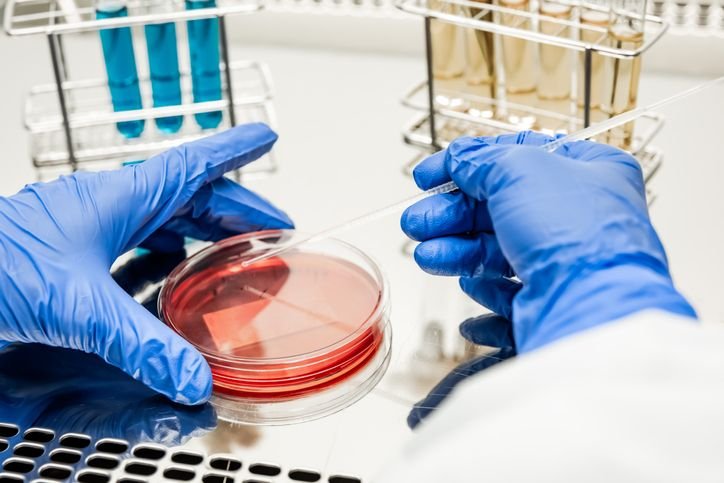The theme of Earth Day 2022 is to “invest in our planet.”
EarthDay.org, the group behind the event, says on its website that to reduce greenhouse gas (GHG) emissions and keep global warming at 1.5°C (2.7°F) above pre-industrial levels by 2050, we “need to act (boldly), innovate (broadly), and implement (equitably).”
“It’s going to take all of us. All in. Businesses, governments, and citizens – everyone accounted for, and everyone accountable. A partnership for the planet.”
As the statement suggests, it’s a big ask. Earlier this month, the UN Intergovernmental Panel on Climate Change (IPCC) released its latest working group report, focused on climate change mitigation. It made for scary reading.
According to the IPCC, many countries are currently on course to miss their individual emissions reduction pledges. As such, critical action needs to be taken immediately in order to keep the 1.5°C — or even the less ambitious, but arguably more realistic at this stage, 2°C — goal in sight.
To get there, the IPCC says that global GHG emissions will need to “peak before 2025 at the latest,” and reduce by 43% over the following five years; methane emissions, specifically, would need to be reduced by about a third over the same period (more on that below.) Carbon dioxide emissions will have reach net zero in the early 2050s if there’s to be any chance of keeping at 1.5°C, according to the IPCC’s models.
The cost of missing these targets, according to the IPCC’s previous working group report from February, is “increased heatwaves, droughts, and floods [that] are already exceeding plants’ and animals’ tolerance thresholds,” exposing “millions of people to acute food and water insecurity, especially in Africa, Asia, Central and South America, on small islands, and in the Arctic.”
While the energy sector was the single biggest source of GHG emissions over the past decade — contributing just over a third globally — agriculture and land use isn’t far behind, contributing around a quarter. What’s more is that what the IPCC classifies as industry and transport are each substantial sources of GHG emissions, too; and the agrifood sector overlaps with both of these. All in all the report underscores, once again, the critical part we in the food and ag industries have to play in mitigating the impacts of climate change.
On the brighter side…
It’s easy to get sucked into despair and fear when reading such disturbing forecasts. But it’s worth highlighting the fact that the latest IPCC report wasn’t all doom and gloom; there were some positive takeaways – not least when it comes to the transformative role that technological innovation and investment could play in climate change mitigation.
“There is increasing evidence of climate action,” the IPCC states. “Since 2010, there have been sustained decreases of up to 85% in the costs of solar and wind energy, and batteries. An increasing range of policies and laws have enhanced energy efficiency, reduced rates of deforestation, and accelerated the deployment of renewable energy.”
And when it comes to food and agriculture-related innovation, in particular, there’s at least something to feel good about.
While the agriculture, forestry, and other land uses (AFOLU) sector accounted for as much as 22% of total GHG emissions between 2010-2019, it can also “deliver large-scale GHG emission reductions and enhanced removals” when solutions are implemented sustainably, the IPCC report says (though these “cannot fully compensate for delayed action in other sectors,” it adds.) Among other solutions called out by the report, these include carbon sequestration, plant-based diets, and “animal-sourced food produced in resilient, sustainable, and low-GHG emission systems.”
In addition, the AFOLU sector offers “many country-specific opportunities to provide co-benefits — such as biodiversity conservation, ecosystem services, and livelihoods — and avoid risks; for example, through adaptation to climate change.”
As the IPCC points out, investment is essential to ensure these opportunities can be realized. And the agrifoodtech community is certainly doing its bit.
AgFunder‘s recently published 2022 Agrifoodtech Investment Report revealed that worldwide funding into agtech and foodtech ventures hit a record $51.7 billion last year – almost double what had been raised a year previously [disclosure: AgFunder is AFN‘s parent company.]
Digging down, Innovative Food — an AgFunder-defined category including plant-based proteins, cultivated meat, and fermentation technologies — similarly saw investment volumes double year-on-year; as did Cloud Retail Infrastructure, which covers many supply chain and logistics solutions that can also contribute towards emissions reductions.
Keep up the momentum
It seems fair to say that the agrifoodtech community as a whole — including entrepreneurs, investors, and consumers — is pulling together to help the world keep to its GHG emissions targets.
But the purpose of this article isn’t simply to give us the chance to pat ourselves on the back, make us feel good about ourselves, and say “job well done.” Because the job is far from from done, despite the promising advances that are being made.
The IPCC says that while “there is sufficient global capital and liquidity to close investment gaps” in supporting and implementing solutions, “financial flows are a factor of three to six times lower than levels needed by 2030 to limit warming to below 2°C.”
Moreover, ensuring that capital gets to where it’s needed “relies on clear signaling from governments and the international community, including a stronger alignment of public sector finance and policy.”
As a researcher and writer covering the agrifoodtech space, I’m privileged to interact with people every day who are working tirelessly to solve the world’s climate problems. They fill you with confidence that solutions to those problems exist, and that we have it within our collective power to slow the rise of global temperatures and mitigate the most disastrous effects of anthropogenic climate change.
But a key piece of the puzzle is money. Many of these extraordinary ideas and inventions will never be able to have any impact if they don’t get get the investment they need.
We in the agrifoodtech ecosystem have already shown we can do it, with what has been another record-breaking year for venture investment in our space.
But we need to keep breaking those records over the coming years if we are to continue to have hope that we can turn back the tide on climate catastrophe. And at the same time, we need to do everything we can to push governments and other public sector sources of capital to join us.












